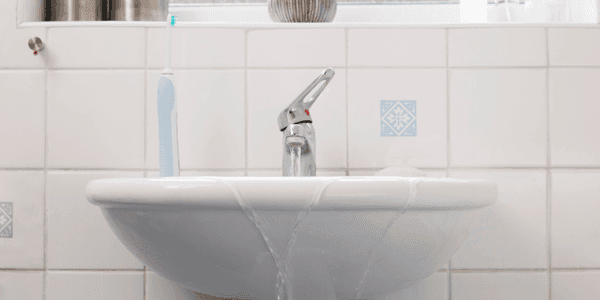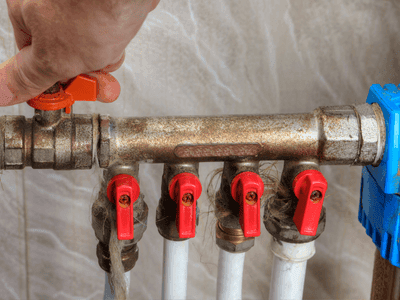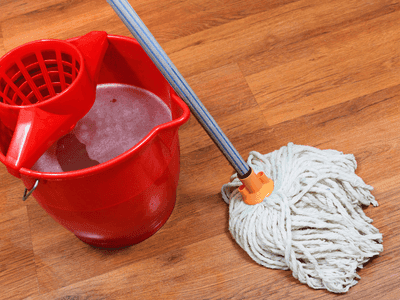Bathroom Flood? Here’s What To Do In The First 5 Minutes To Minimize Damage

The Nightmare You Didn’t See Coming
You step into your bathroom, and instead of the usual dry floor, you’re greeted with an ankle-deep pool of water. Your heart races—where is it coming from? What do you do first? Whether it’s an overflowing toilet, a burst pipe, or a malfunctioning appliance, water spreads faster than you think, seeping into floors, walls, and cabinets before you can even process what’s happening.
A bathroom flood doesn’t just create an inconvenient mess—it threatens your home’s structure, your belongings, and even your health. But here’s the good news: If you act fast, you can prevent thousands of dollars in damage and avoid the nightmare of hidden mold growth. The first five minutes are crucial, and knowing exactly what to do can mean the difference between a quick cleanup and a costly disaster.
The Immediate Panic: Why Every Second Counts
The moment you notice water pooling in your bathroom, your first instinct might be to freeze up or panic. But time is critical. Water damage starts almost instantly, and the longer it sits, the worse the consequences become. Within minutes, water can:
- Damage flooring, cabinets, and walls beyond repair, especially if made of porous materials like wood and drywall.
- Soak into drywall, leading to hidden mold growth that can spread behind walls and ceilings.
- Create electrical hazards, putting your safety at risk and increasing the likelihood of short circuits or fire hazards.
- Compromise the structural integrity of your home by weakening the foundation or subflooring.
Acting fast isn’t just about preventing damage; it’s about protecting your home and family from potential health and safety risks.
Step 1: Stop the Source—Cut Off the Water Fast

Locate the Shutoff Valve Before It’s Too Late
The first thing you need to do is stop the flow of water. If the flood is caused by a toilet, sink, or bathtub, locate the nearby shutoff valve and turn it clockwise to stop the water. Toilet shutoff valves are typically behind the toilet, while sink valves are underneath the sink.
What to Do If You Can’t Find the Main Water Supply
If you can’t locate the shutoff valve or it’s not working, turn off your home’s main water supply. This valve is typically found near the water meter, in the basement, or outside near your foundation. In colder climates, it may be inside your home to prevent freezing. If you live in an apartment, contact your building maintenance immediately.
Pro Tip: Know where your shutoff valves are before an emergency happens. Label them so they’re easy to find when time is of the essence.
Step 2: Prioritize Safety—Avoid Electrical Hazards
Water and Electricity Don’t Mix—Stay Safe
Standing water and electricity are a dangerous combination. If water reaches electrical outlets, appliances, or light fixtures, it could create a life-threatening hazard.
- Avoid touching electrical devices while standing in water.
- If water is near outlets, shut off power to the affected area at your breaker panel.
- If you’re unsure about safety, call an electrician before attempting any cleanup.
- Use a flashlight instead of turning on overhead lights to inspect the damage in dark areas.
Step 3: Quick Cleanup—Contain and Remove Excess Water

Grab Towels, Mops, and a Wet/Dry Vacuum
Once the water is no longer actively flowing, it’s time to start removing it. The faster you extract water, the better your chances of preventing damage.
- Use towels, mops, and buckets to soak up excess water, focusing on corners and hidden crevices where water can linger.
- Deploy a wet/dry vacuum if available, as it speeds up removal and can help extract water from carpets and fabric.
- Create barriers with rolled-up towels to stop water from spreading into hallways or adjacent rooms.
The Trick to Preventing Water from Seeping Into Other Rooms
Place heavy-duty garbage bags or plastic sheets under doorways to create a temporary water barrier. This can prevent water from creeping into carpets or wood floors in nearby rooms. If your bathroom has floor drains, make sure they are clear and working efficiently.
Step 4: Protect Your Belongings Before It’s Too Late
Move Rugs, Towels, and Personal Items to a Dry Area
Remove anything that can soak up water, such as rugs, bathmats, and towels. Place them outside or in a well-ventilated area to dry.
How to Save Wooden Cabinets, Furniture, and Floors
Water and wood are a bad mix. If water reaches wooden cabinets, baseboards, or furniture:
- Wipe them dry immediately and use fans to circulate air.
- Avoid heat sources like hairdryers, which can cause warping and cracking.
- Use dehumidifiers to speed up drying and prevent mold.
- Check for swelling or discoloration, which may indicate deeper damage requiring professional help.
Step 5: Assess the Damage—When to DIY and When to Call a Pro
Signs That You Can Handle Cleanup Yourself
Some minor bathroom floods can be managed with quick action. If the water is clean (not from a sewage backup) and hasn’t seeped into walls or subflooring, DIY drying methods may be enough.
- Check under the sink and behind the toilet for hidden leaks that could cause ongoing issues.
- Monitor for lingering moisture by using a moisture meter on drywall and floors.
When to Call a Water Damage Restoration Professional
Some situations require expert help, especially if:
- Water has soaked into walls, drywall, or insulation, which can harbor mold.
- There’s a musty smell, indicating hidden moisture and mold growth.
- Electrical hazards are present and could pose a fire risk.
- The flooding involves contaminated water (like from a sewer backup), which poses serious health risks.
- Flooring or walls show signs of buckling or warping, which indicates deeper structural damage.
A professional can assess moisture levels, ensure thorough drying, and prevent mold or structural damage.
The Importance of a Quick Response in a Bathroom Flood
The faster you act, the better your chances of avoiding serious damage. Every second counts, and following these steps can help you save your bathroom from costly repairs.
Preventing Future Floods: Pro Tips to Avoid Another Disaster
- Regularly inspect pipes, faucets, and appliances for leaks.
- Know where your shutoff valves are located before an emergency happens.
- Install water leak detectors in high-risk areas for early warning.
- Replace old, worn-out plumbing components before they fail.
- Consider using waterproof caulk around the base of the toilet, bathtub, and sink to help prevent water from seeping into flooring.
- Check grout and sealant in showers and around sinks to prevent water from penetrating tile or countertop surfaces.
At Chrome Water Damage Experts, we specialize in fast, professional water damage restoration.
If you’re dealing with a flooded bathroom, don’t hesitate to reach out—a quick, expert response can save your home from costly repairs and long-term issues.
Call Chrome Water Damage Experts today for a free assessment and professional flood cleanup . Our team is available 24/7 to help restore your home quickly and affordably.

Leave a Reply